Hello! Today we talk about people’s opinion about tourism. Today, in particular, we focus on what are the views of tourists: what tourists think about sustainable tourism, what they feel about ecotourism and other exciting things.
If you are interested in this topic, don’t hesitate to read on!
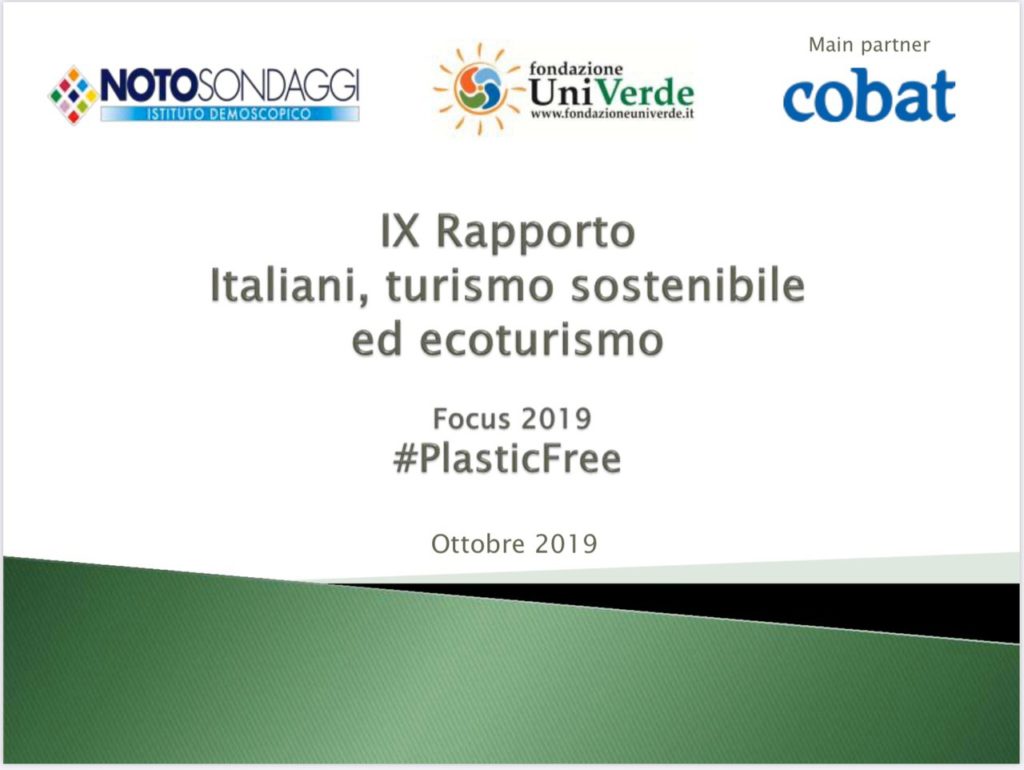
The data that I’m sharing with you comes from the 9th Italian Sustainable Tourism and Ecotourism Report realized by Fondazione Univerde. This report was presented in October 2019, so a short time ago. However, there is not yet a report that considers the COVID 19.
Two notes on the methodology
The reference universe is the Italian population;
the sample numbers are a thousand citizens;
the margin of error is about 3%.
We need this information to understand how much the sample is relevant, i.e. representative of the population to be tested (useful or not).
The first classic question that is generally asked has the aim of stimulating interest in people who will have to answer further questions. This phase is an introduction.
An example is this question: what is the primary need associated with the idea of tourism?
According to the 47% of the respondents, the main reason is cultural enrichment; 45% of the people said they need knowledge and exploration;
According to 42% relaxation and comfort.
The other needs are leisure and fun, movement and sport.
This one is a multiple-choice question, and this is the reason why there is no match for the total number of answers.
The second question is, what attracts you when choosing a tourist destination?
A million-dollar question, because all tourist destinations ask themselves this question and try to answer, not only conceptual but operational to meet the motivation to move.
So what is attractive when choosing a tourist destination?
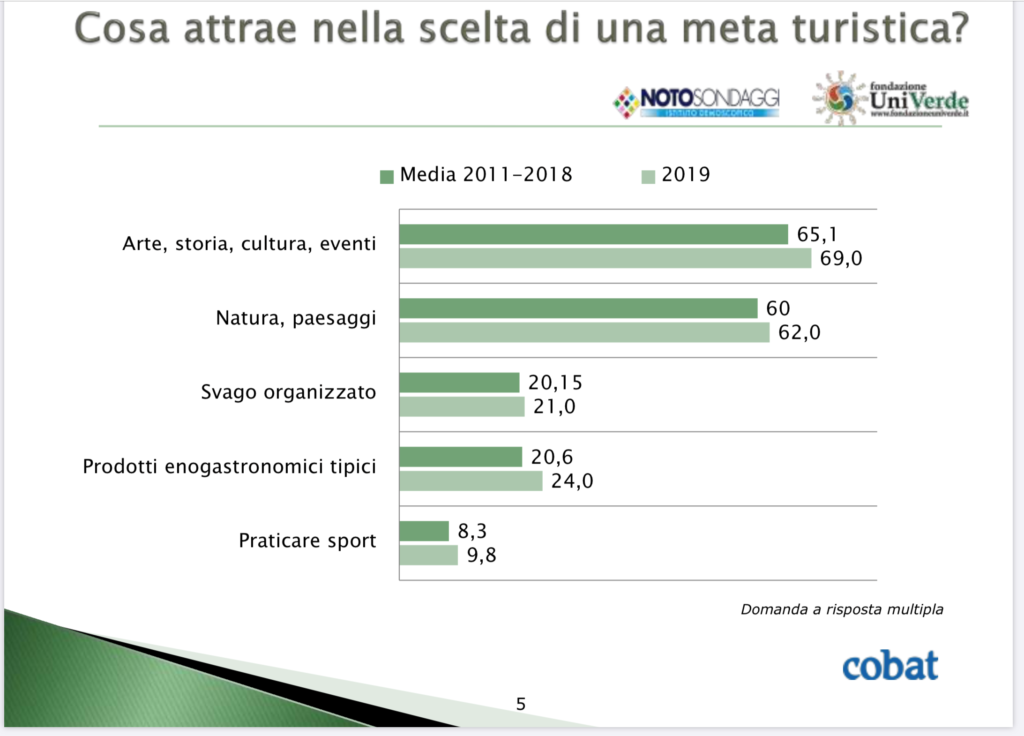
We have still general information about Italian tourists, but we are now beginning to delve into the knowledge and practice of sustainable tourism.
The question is, is there an environmental emergency in Italy today, caused by the tourism sector?
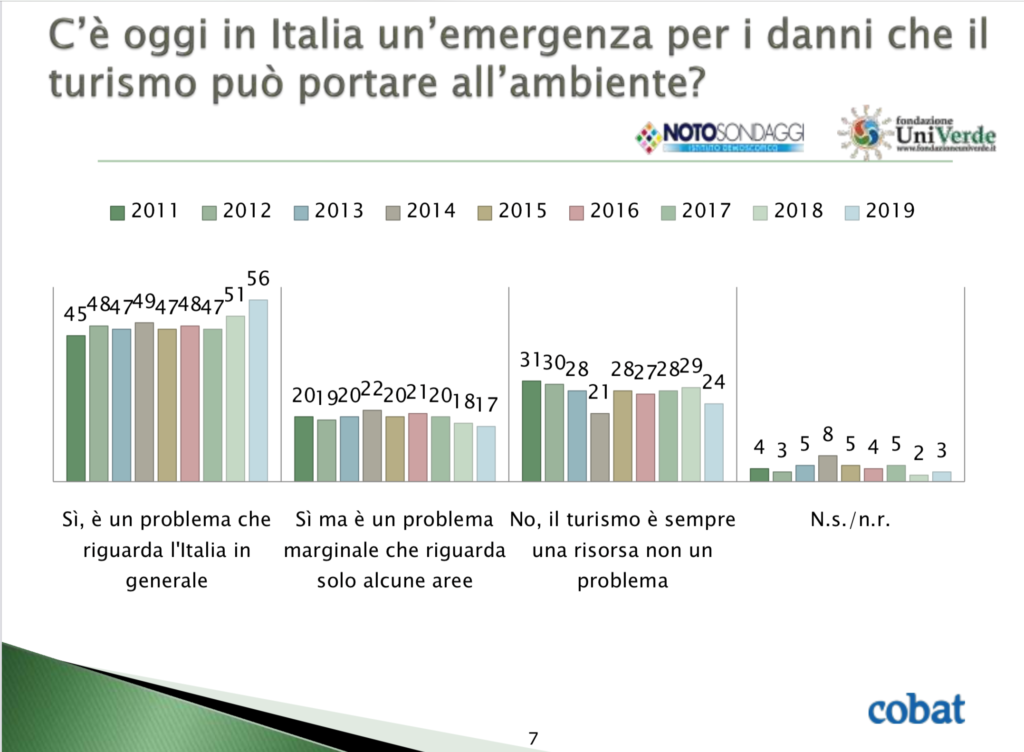
Well, over 60% of the respondents answer yes, the differentiation lies in the fact that most of them believe that yes the problem is general, while a smaller part answer that it is a marginal problem that concerns only some areas.
It is no coincidence that I chose Venice and the Gulf of Tigullio in Liguria as examples for the questions about sustainable tourism for residents. These are two fascinating areas.
The next question is how can tourism damage the environment?
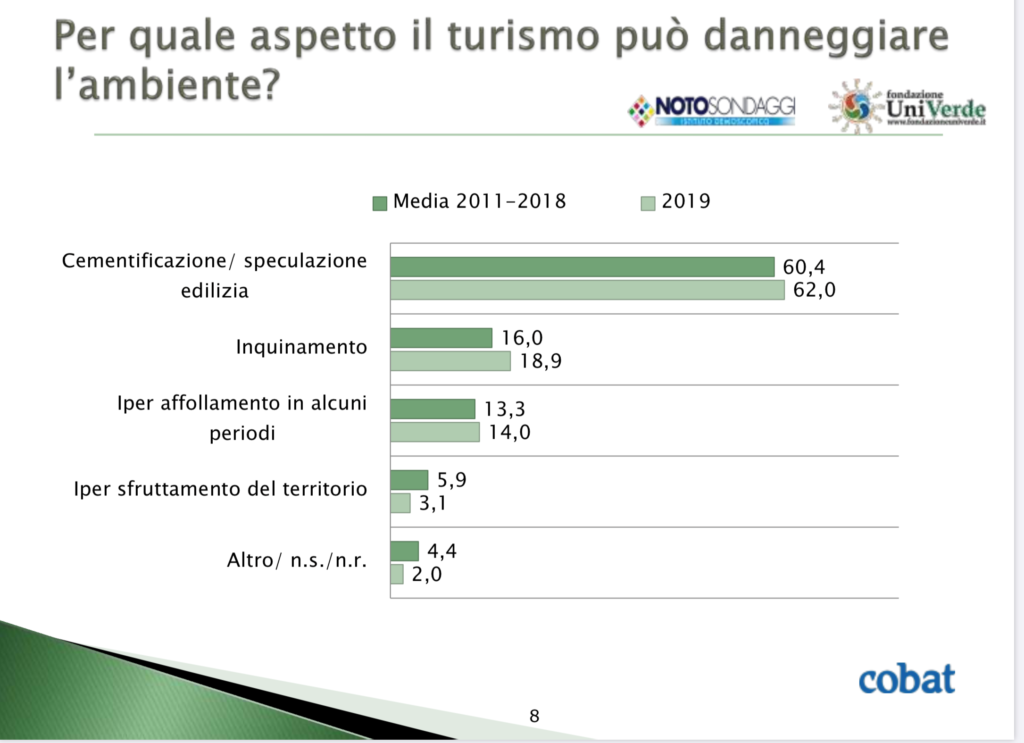
It is very interesting that the main factor in a very strong way is cementing, building speculation. Continuing the questions become: have you ever heard of sustainable tourism and how much sustainable tourism is practised today?

From 2011 until 2019 we see a steady growth of people who have heard of sustainable tourism, there is only a decrease of two percentage points in 2013. I must say that I had the same perception of constant growth, I graduated and did my thesis in 2011 and since then, even in an area like Lake Como, there has always been a continuous increase in knowledge on the subject.
There has been an increase in the number of activities that mention sustainable tourism, and there has undoubtedly been a significant increase in communication.
Next question is how much sustainable tourism is practised today? We always have constant growth.
This further question confirms what has just been said: at the level of communication and information, surely the perception is that sustainable tourism is more practised, from 2011 to 2019 growing steadily.
Let’s remember the definition of sustainable tourism. Sustainable is tourism that respects the environment, tries to reduce the energy consumption of resources of the territory and allows the local population to avoid most of the negative impacts from a social point of view, and allows an economic development of the area where it takes place.
There are two other articles that deal with the topic of sustainable tourism: in particular “Sustainable Tourism the theory!” that I suggest you go and see if you want to go deeper.
This next slide contains adjectives or short definitions associated with sustainable tourism in Italy.
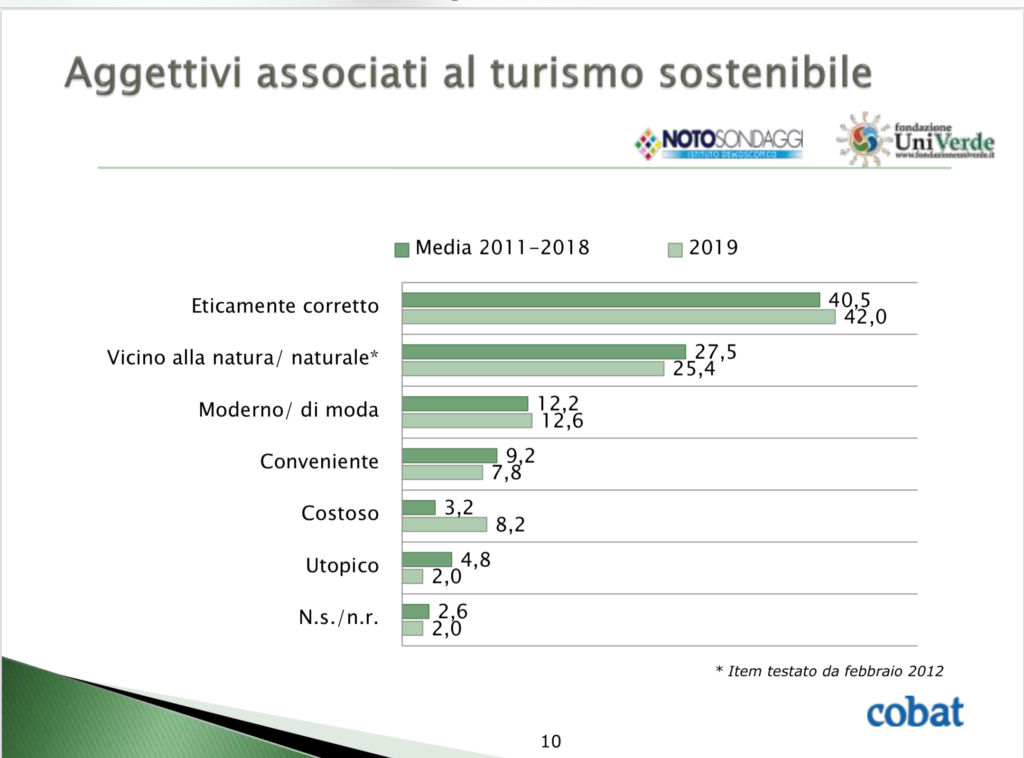
Interesting that “convenient” in the average between 2011 and 2018 has 9 percentage points, currently in 2019 7.8 percentage points. “Expensive” is lower in the average between 2011 and 2018 and is higher in 2019 a lot because from 3.2 passes 8.2 but certainly, we have more than 10% regarding ethically correct, close to nature, modern and fashionable.
For the economic development of a tourist area the constraint of sustainability is:
- a brake
- a necessity or
- an opportunity for growth?
Regarding a brake in 2019, about 6% of respondents identified it as the closest answer to their idea; regarding a need, we are at 47%; regarding an opportunity for growth, we are at 42%.
In this case, there is the 5% of people who did not give an answer, they did not find in the three answers a suitable option for them.
The next one is an interesting question, even if asked in this way, in my opinion, it hides some expectation. When planning a tourist stay thinking about the destination, the means of travel, the structure to be booked, do you make choices that do not harm the environment?
From 2011 to 2019 there has been a constant growth from 56% positive response to the current 61% positive response.
The question of how it was asked has an expectation of a positive response. Perhaps, it could have been written slightly differently.
Deepening this first question, there is a second one that allows you to choose whether this planning of a more conscious tourist stay is a need that has always had or a need born in recent years.
It is fascinating to know that 64% of the respondents in 2019 consider it “a need born in recent years”. Since 2014 this answer has started with 52% of the choices and is now at 64, so it is continuously growing, this means that at least since 2013 there has been a steady growth of people who consider it a need born in recent years, which is aligned to what was said above.
As far as the behaviour of tourists is concerned, if making choices that do not harm the environment meant spending more, what would be the answer for you?
This is the typical question of those who deal with questionnaires for satisfaction, for the implementation of sustainability practices in destinations.
The result was for this year (in 2019) for 48%, I would be willing to spend something more 10-20%; for 34% the priority would always be the economic advantage; for 10% the priority would be the environment even if it costs more.
The results seem to lead to an excellent opinion. You should check which people have been interviewed because if you talk to people already convinced, it will probably be easier to get these results.
I think it is interesting to talk about what makes you understand that a hotel has attention to the environment.

I am not surprised to see among the results, something as visible as photovoltaic panels.
The second result is a system for saving electricity, and the third result is a system for saving water, so all things that are only partially visible. Saving electricity could be, for example, the fact that when you remove the electronic key, you cut the power.
We then have bio-architecture for designing eco-materials for construction and plastic free as further interesting answers.
*Note: the plastic speech is tested since September 2019 so this is the first edition of the report that contains a reference to the absence of plastic.
These answers are all within the hat of the structure. At the same time, concerning organization and services, the three things that most demonstrate and make you understand that the hotel has attention to the environment. The organic and zero km food, the waste collection system, the cleaning methods and proposed eco-tourism excursions.
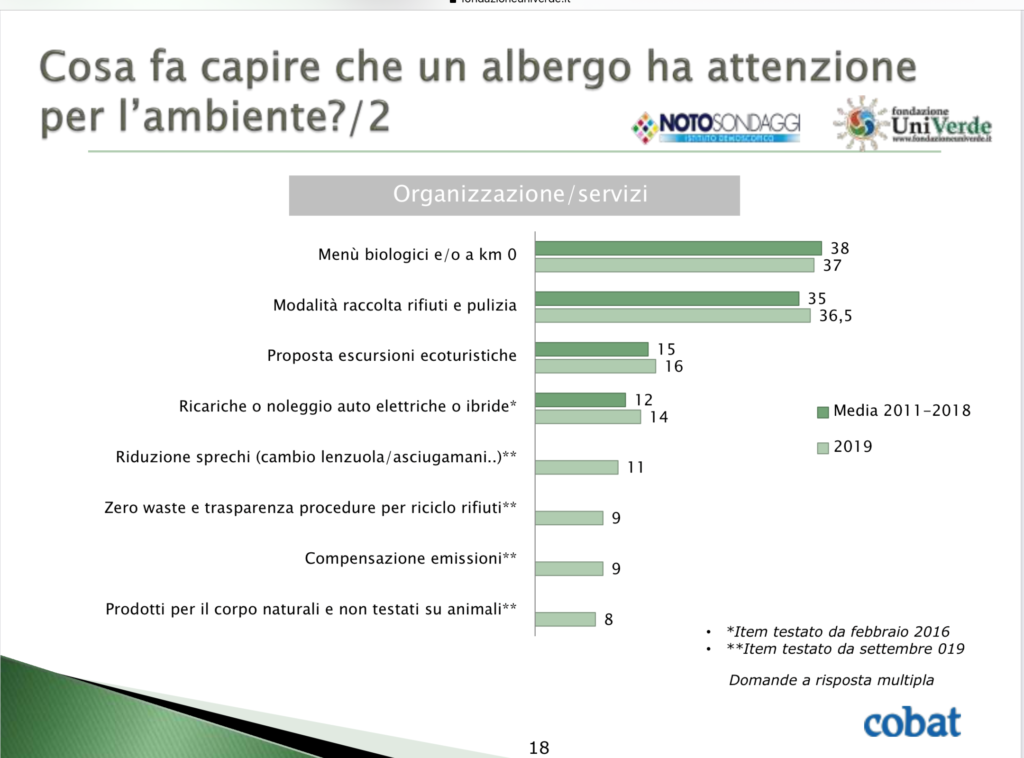
Also exciting is the fact that 65% of respondents in 2019 said that if the destination were reachable by train, they would give up the car; 51% if the destination was reachable by bus and 58% if there was car-sharing on-site; 48% if there was bike sharing on site.
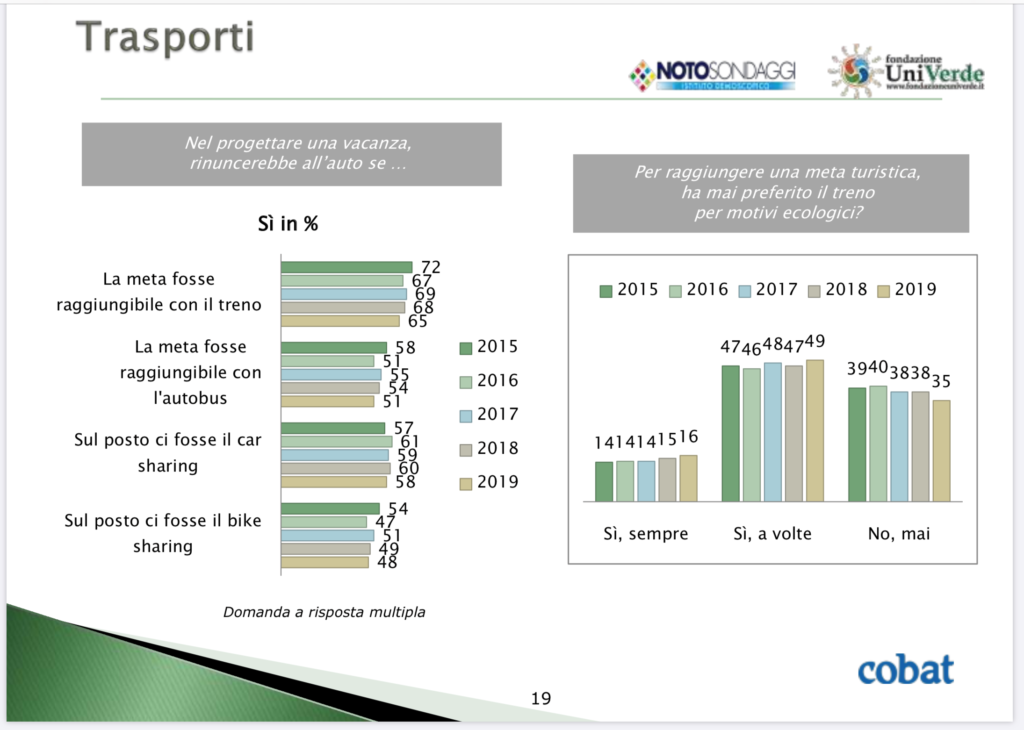
This seems to me a very interesting result! Clearly it is not possible to move destinations, but it is possible to work more on car sharing and bike sharing in all destinations.
Now let’s talk about ecotourism and how it works for the tourist industry.
To the question has ever heard of ecotourism the response is growing positive from 47% in 2011 to 68% in 2019.
How attracted are you to the idea of ecotourism? There is an average of 7.7 votes in 2011, 7.3 the lowest in 2014 and even 8 now in 2019.
The tools used to plan your ecotourism stay are basic internet and word-of-mouth, even if the tourist office or directly on site have their own importance. The sites consulted in particular are search engines and Tripadvisor/ Booking for which OTA Online Travel Agency platforms.
When you ask about the sensitivity for sustainable tourism and ecotourism in the next ten years the answer is that for 68%, it will grow; for 18% it will remain the same; for 4% it will decrease; for 10% there is no answer.
Before moving on to the focus on plastics there is a question I wanted to share that I would also like to know your opinion about, perhaps in the comments below the video. In Italy, We are talking about the opportunity of a closed number for access to art cities, are you generally in favour or against this kind of measures?

As can be seen from the responses in 2018 and 2019 more than 50% proved to be CONTRARIO (against), while favourable is between 34% in 2018 and 36% in 2019.
What is your response to this? If you like, motivate your answer too!
Now let’s move on to plastics.

First of all, when asked, have you ever heard of the damage caused by the abandonment of disposable plastic in the seas, rivers and countryside? 96% of respondents said yes and when asked if they were concerned about the impact of disposable plastic on the environment 80% still said “yes, it is an emergency that should be addressed on average”; 17% “yes, it is an emergency but there are other priorities” and 3% “no, there is too much alarm on this issue”.
Moreover, the question, in relation to the abandonment of plastic in the environment, which kind of activities or tourist practices can be more harmful?
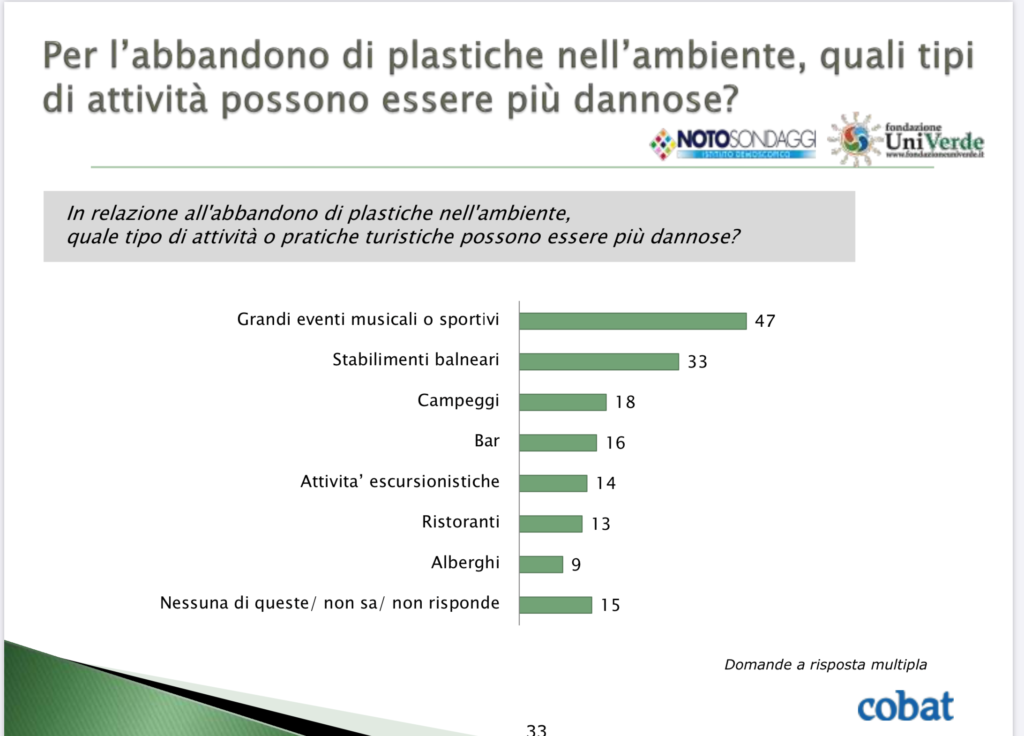
It is interesting because:
- major musical and sporting events were 47%;
- bathing establishments were 33%;
- campsites 18%,
- bar 16%.
Under 15% we have hiking activities 14%, restaurants 13%, hotels 9% and none of them knows or does not yet answer 15%.
The next two questions are interesting to help to assess whether and how to invest (for example in plastic-free products).
If you knew that a hotel or restaurant does not use plastic and disposable would be a valid reason to prefer it to others? 75% answered yes would be a valid reason, 25% answered no.
The next question is: Would you like a tourist facility to propose to your guests as an alternative for single-use?
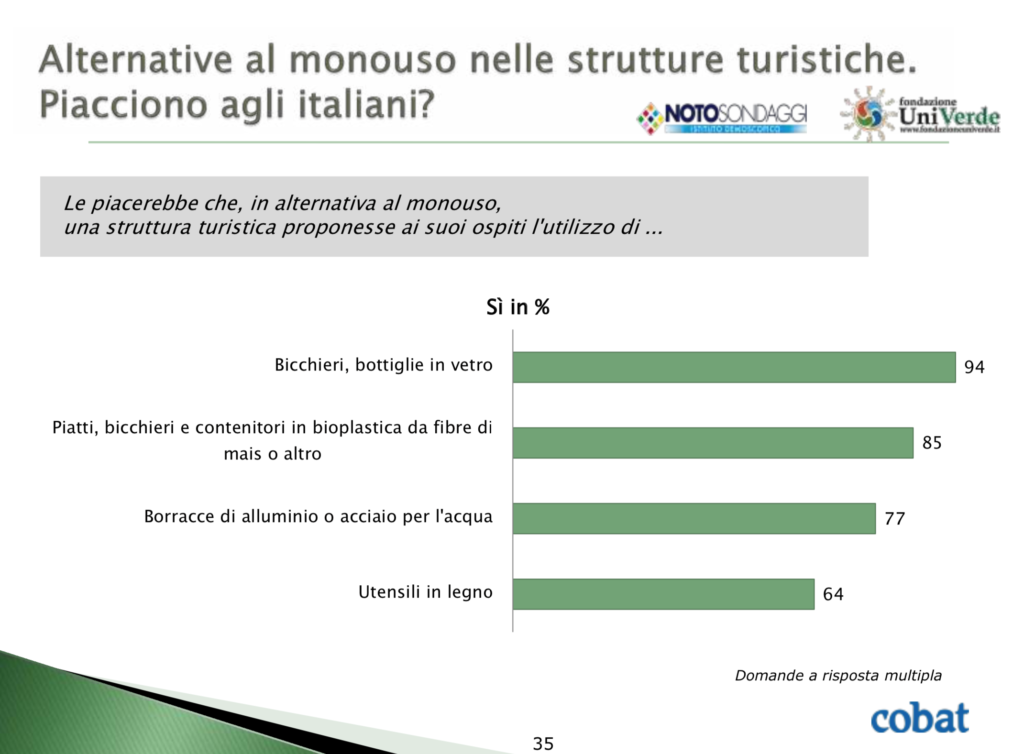
- the use of glasses and glass bottles (yes 94%);
- plates, glasses and containers made of corn fibre bioplastic or other (yes 85%);
- aluminium or steel water bottles (yes 77%);
- wooden utensils (yes 64%).
My opinion in this is that excluding wooden utensils that cannot be used by law in hotels or restaurants in Italy, and I would also exclude bioplastics and corn fibres or other because I do not consider them a real solution against plastic.
As far as glasses and glass bottles and aluminium water bottles are concerned, I agree that they could be good alternatives, but what is your opinion about them?
Let me know! There’s a lot of information in this article, I can’t wait to hear your opinion on all this!
Sara – tourism consultant
